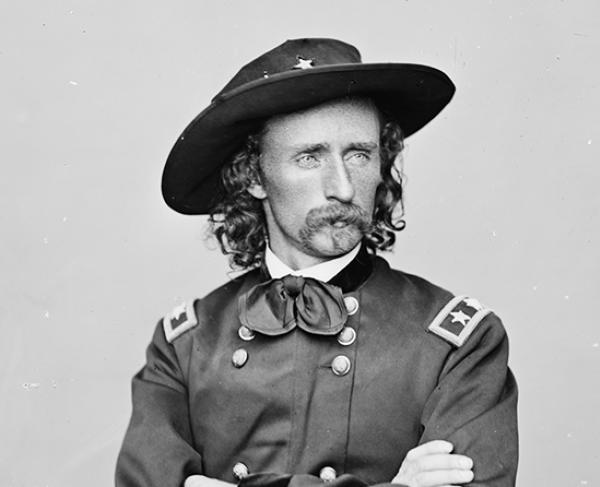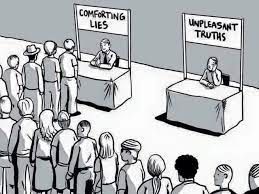
George Armstrong Custer
George Armstrong Custer
The Native American tribes had pet names for George Armstrong Custer. The Crow called him Child of the Morning Star, the Cheyenne labeled him Yellow Hair, but the Lakota Sioux referred to him as Long Hair, even though a barber had cut off his curly blond locks, days before his Last Stand.
A major general when the Civil War ended, but a Lieutenant Colonel during the Indian Wars in the Dakota’s and Montana, Custer harbored more lofty ambitions than only serving in the U. S. Army.
At least that is what Stephen E. Ambrose, a late twentieth-century U. S. historian, hinted at in his dual biography, Crazy Horse and Custer.
A strong Democrat, Custer was tired of seeing Republican administrations control the White House. Abraham Lincoln was first elected in 1860, then again in 1864, but then his Vice-President, Andrew Johnson, completed his second term after John Wilkes Booth assassinated Lincoln.
Former Army General U. S. Grant, a Republican, won election in 1868 and again in 1872, but his administration was marred by appalling scandals that soured the American public.
In the spring of 1876, the Democrats decided to hold their Presidential convention out west, in St. Louis, and scheduled it to begin on June 27. This time they wanted to pick a winner, and a few of the delegates began to think that a winning boy general, like Custer, only thirty-six, stood a fair chance.
Americans love their generals, men like George Washington, William Henry Harrison, Andrew Jackson, Zachary Taylor, and U.S. Grant, who all became a U.S. President.
Although anchorman in his graduating class of 1861, at West Point, 34th out of 34 graduates, Custer proved himself during the Civil War. He was at the first battle at Bull Run, at Antietam, at Gettysburg, in the ferocious Wilderness battle, and at Appomattox, the final battle.
He achieved fame by his daring style, by taking immense chances in battle and winning, and by riding his horse out in front of his famous 7th Cavalry.
Custer understood that he needed a decisive battle over the Sioux now, “if he wanted to stampede the Democratic Convention,” in St. Louis late in the month. Hence, he drove his men and his horses hard, mile after mile, day after day in those hot June days, into Montana.
“He told his favorite scout, Bloody Knife, and the Arikara scouts that he was planning to become the Great White Father,” in other words President of the United States.
When near the Sioux, Bloody Knife rode ahead and saw the enemy congregated on the Little Bighorn. He came away aghast, and told Custer to exercise caution, that “there were more Sioux ahead than the soldiers had bullets, enough Indians to keep the 7th Cavalry busy fighting for two days.”
Custer waved caution aside, and said that “the largest Indian camp on the North American continent is ahead, and I am going to attack it. I could whip all the Indians on the Continent with the 7th Cavalry.” The day was June 25.
That same day, Crazy Horse declared to his men, “It is a good day to fight! It is a good day to die!”
Instead of keeping his 611 men together, Custer divided them into four parts, a decision that proved a mistake, because the Sioux had as many as 3,000 warriors, and they were waiting for him.
Plus, Custer’s men were exhausted. Sitting Bull saw them and later said, “they were too tired. When they rode up, their horses were tired, and they were tired. When they got off from their horses they could not stand firmly on their feet. They swayed to and fro.”
Custer fought his final battle on a bluff above the Little Bighorn, renamed Custer’s Hill. The next year, a reporter from the New York Herald quizzed Sitting Bull who said, “Long Hair stood like a sheaf of corn with all the ears fallen around him. He killed a man when he fell. He laughed.”
The reporter asked, “You mean he cried out?” “No,” the chief said, “he laughed. He had fired his last shot.”
Stephen E. Ambrose wrote, “Custer had gambled all his life. It was a winner-take-all game, and Custer would have played it again if given the chance. He laughed. Then he died.”
Would a daredevil like Custer have made a good President? Ambrose wrote, “Custer probably would not have been much worse than the men who did hold the job for the remainder of the nineteenth century. The country would have survived.”
A quote that I read years ago, but could not find today, suggests that “the intelligence levels of the Presidents who followed Lincoln disproves evolution, the idea that a species progresses into a better, more capable living being.” It was not so with Hayes, Garfield, Arthur, Cleveland, and Harrison.
The Democratic candidate for President in 1876, Samuel Tilden, won the popular vote, but the election was thrown out because of charges of fraud. A commission gave the presidency instead to Rutherford B. Hayes, another Republican.




